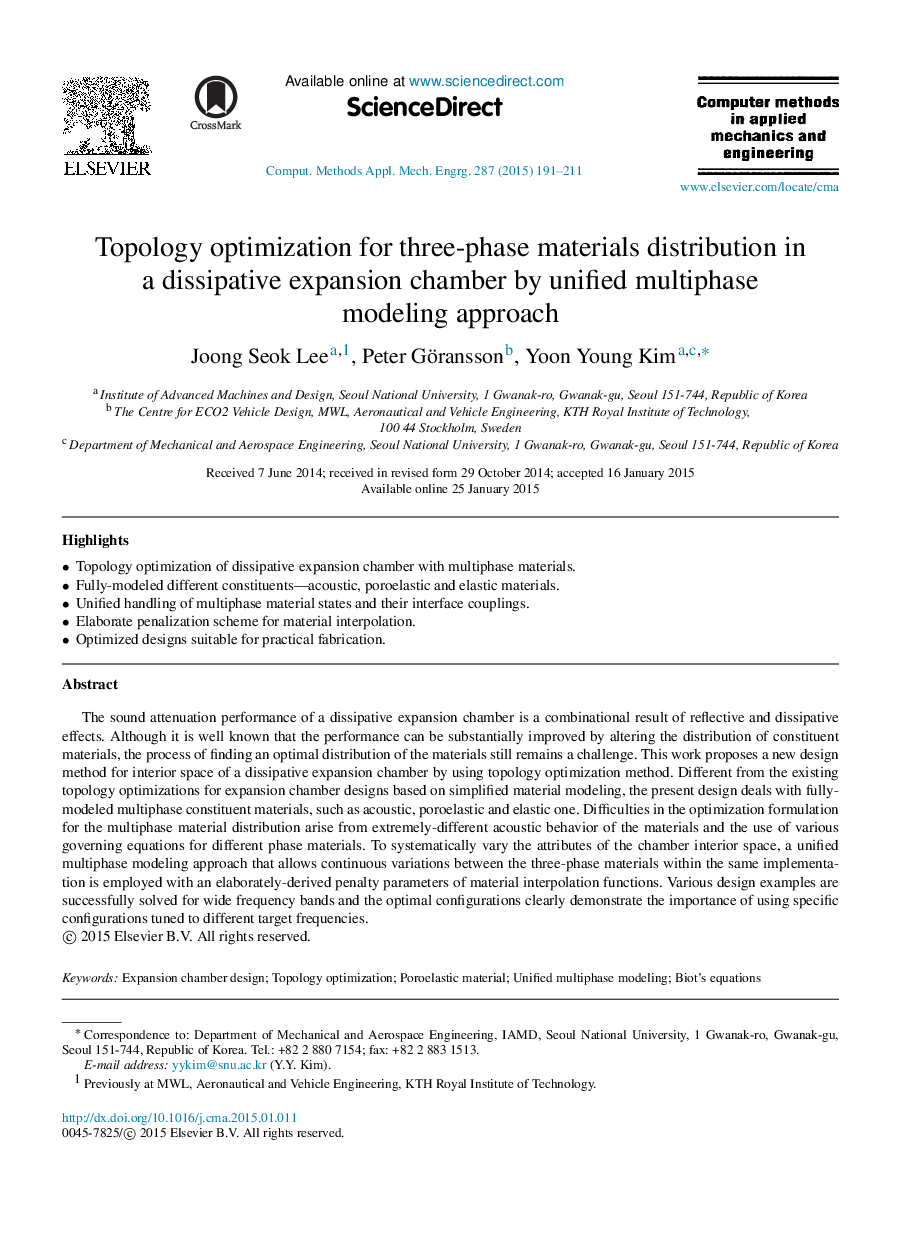| Article ID | Journal | Published Year | Pages | File Type |
|---|---|---|---|---|
| 498122 | Computer Methods in Applied Mechanics and Engineering | 2015 | 21 Pages |
•Topology optimization of dissipative expansion chamber with multiphase materials.•Fully-modeled different constituents—acoustic, poroelastic and elastic materials.•Unified handling of multiphase material states and their interface couplings.•Elaborate penalization scheme for material interpolation.•Optimized designs suitable for practical fabrication.
The sound attenuation performance of a dissipative expansion chamber is a combinational result of reflective and dissipative effects. Although it is well known that the performance can be substantially improved by altering the distribution of constituent materials, the process of finding an optimal distribution of the materials still remains a challenge. This work proposes a new design method for interior space of a dissipative expansion chamber by using topology optimization method. Different from the existing topology optimizations for expansion chamber designs based on simplified material modeling, the present design deals with fully-modeled multiphase constituent materials, such as acoustic, poroelastic and elastic one. Difficulties in the optimization formulation for the multiphase material distribution arise from extremely-different acoustic behavior of the materials and the use of various governing equations for different phase materials. To systematically vary the attributes of the chamber interior space, a unified multiphase modeling approach that allows continuous variations between the three-phase materials within the same implementation is employed with an elaborately-derived penalty parameters of material interpolation functions. Various design examples are successfully solved for wide frequency bands and the optimal configurations clearly demonstrate the importance of using specific configurations tuned to different target frequencies.
